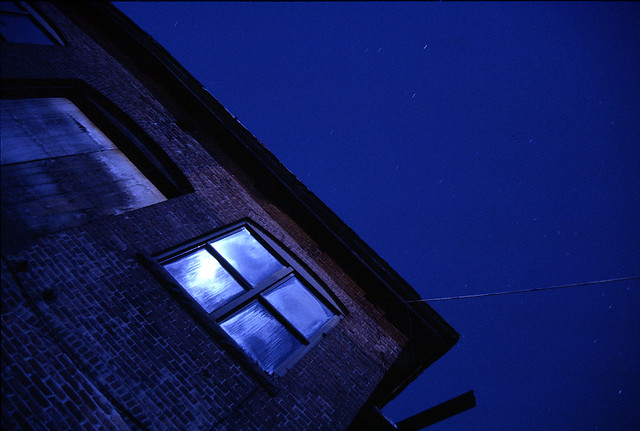 There are plenty of catchy songs out there that stick in your brain for hours and even days after you listen to them. Some of these songs are great and you are happy for them to run on repeat in your head. Others are horrible and you do everything in your power to will their words and melodies away.
There are plenty of catchy songs out there that stick in your brain for hours and even days after you listen to them. Some of these songs are great and you are happy for them to run on repeat in your head. Others are horrible and you do everything in your power to will their words and melodies away.One of the good songs that gets stuck in my head whenever I listen to it is a song called "Dark Blue" by Jack's Mannequin. In it, he sings:
Slow down...this night's a perfect shade of
Dark blue, dark blue
Have you ever been alone in a crowded room when I'm here with you
I said the world could be burning down
Dark blue dark blue
Have you ever been alone in a crowded room well I'm here with you
I said the world could be burning 'til there's nothing but dark blue...
Just dark blue
This song, I suppose, could be a theme song for the season of Advent. After all, the church dresses up in blue for Advent and we talk a lot about darkness and blueness and waiting.
Why blue, you might ask? Here is one answer to that question:
At seven o’clock on a Monday morning in early December, two young children take their place at the breakfast table. Heat rises from their bowls of oatmeal and cups of hot chocolate, teasing their still-sleepy eyes awake. The younger child looks upward and notices the view out a high window. The sky is an inky blue, a deep indigo, and the silhouette of a great tree in the cuts across the almost emerging dawn as a rough black stripe. “Mom,” he says, suddenly alert, “look at the sky. It’s the same color as the Advent candles!”excerpted from “Environment and Art for the Season [of Advent],” Sundays and Seasons 2002, Year A, (Minneapolis, MN: Augsburg Fortress, 2001), p. 25. (ht: Clayfire Curator blog)
In Advent, we turn our eyes upward. The smoky blue threshold of night that blankets North America during these weeks can feel oppressive, so that emotionally we may feel “blue.” But this vast celestial canopy can also inspire awe. Advent blue marks this tension between our own smallness, our sleepiness, our vulnerable place in the cosmos and the way the heavenly promise of redemption stirs and quickens us. As the scriptures urge us to “keep awake,” we respond with vigilance.
Here is another answer:
But still, why not red? Everyone else is using red, including most churches. Red is our culture’s go-to color. Red symbolizes heat, fire, blood, passion, love, warmth, power, excitement and aggression. Researchers say it can elevate blood pressure and respiratory rates. It has the effect of stimulating people to make quick decisions and increase expectations. Red is an attention grabber. Words and objects in red capture people ‘s attention immediately. Red is an emotionally intense and very extreme color.Sid Burgess, excerpted from “Blue vs. Red,” a sermon for the 1st Sunday of Advent, December 1, 2002, Edgewood Presbyterian Church, Birmingham, AL. (ht: Clayfire Curator blog)
Blue, by contrast, is more complicated, the experts say. Blue represents solitude, sadness, and depression–Blue Monday–but it also signifies wisdom, trust and loyalty. Wearing blue to job interviews, they say, indicates dedication and loyalty. Blue relaxes our nervous system, while red excites it. Blue has a sobering effect on the mind and can cause people to be more contemplative, which is the opposite of our reaction to red. Peaceful, tranquil blue, is a good color for bedrooms, causing the body to produce calming chemicals. Darker shades of blue, however, can feel cold and depressing.
So, what is the Church trying to tell us by using the color blue–lighter shades of blue, to be sure–during the Season of Advent? In a word, hope! In two words: divine hope!
At the outset of the Advent season, the church “hopes for more than we have yet seen.” Think about this. There is a profound difference in the message we have to deliver in this season of the year, versus the predominant message of our culture. To be sure, both church and culture look to the coming of Christmas and say, Jesus has come! But only the Church looks to this annual celebration and says, Christ will come again! To deliver this startling message, we need all the resources we can command–both sight and sound.
Here is wishing you a dark blue Advent, full of days where you slow down, where you feel alone in crowded rooms, where the world is the perfect shade of dark blue for you to hope for far more than you have yet seen.

No comments:
Post a Comment